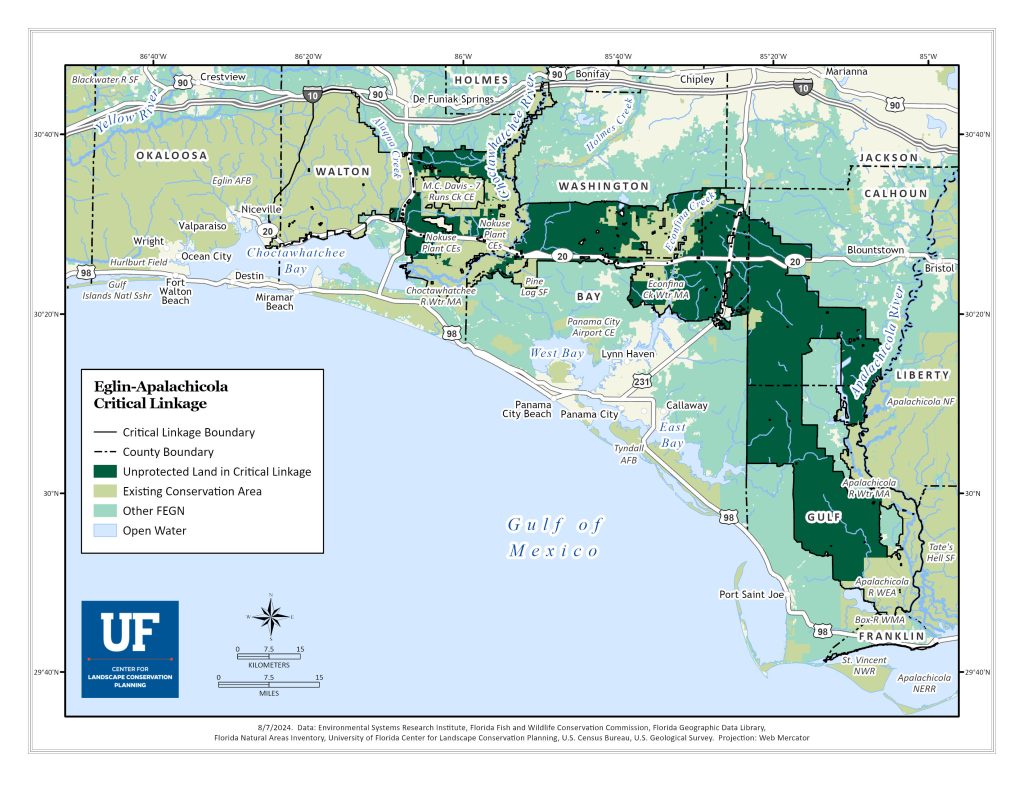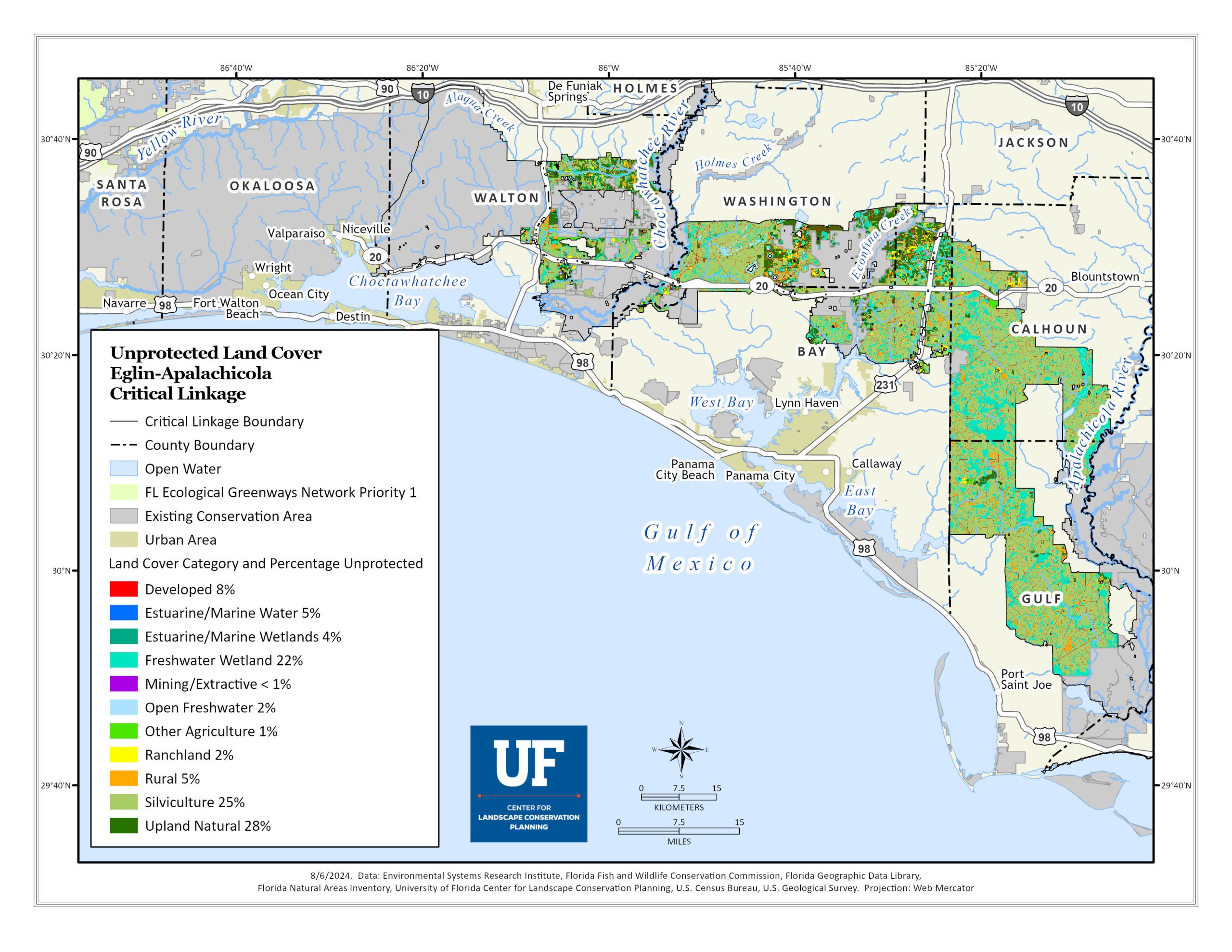The Eglin-Apalachicola Critical Linkage
In the heart of the Florida panhandle, miles of undeveloped white sandy beaches, calm bays and barrier islands draw Floridians and tourists alike to iconic small beach and fishing towns along the Emerald Coast. However, this region is not just renowned for its emerald-colored gulf waters and pristine beaches. The Apalachicola-Eglin Critical Linkage and surrounding region is one of six biological hot spots within the entire United States. An ecological wonder, the linkage would provide a corridor haven between two of the most important conservation lands for rare biodiversity: Eglin Airforce Base and Apalachicola National Forest.

The warm, wet climate influences from the Gulf Coastal Plain, Atlantic Coastal Plain and Appalachian Mountains, river valleys connected deep into the continent has led to the high biodiversity of this relatively small region. The complex hydrologic, geologic, and natural community network of the linkage has historically been protected due to the rural character of the region. Much of the natural ecosystems have remained untouched in conservation lands, and working timberlands make up the majority of unprotected land in the linkage. Timberlands are critical components for the FEGN and Florida Wildlife Corridor, especially in the Apalachicola-Eglin region where they are large, intact landscapes that offer physical corridors for wildlife movement, as well as critical ecosystem services like carbon sequestration, surface water management and aquifer recharge. Timber plantations in the region also host species like the state threatened red cockaded woodpecker, eastern indigo snake, Florida bobcat and others whose natural range includes pine flatwoods, an ecosystem that timberlands can mimic.
Another significant regional business tied to the land is the vibrant aquaculture industry of the coastal gulf communities. The health of this industry in the North, South, East and Choctawhatchee Bays is dependent on the health of the river systems that feed them – the Apalachicola River, Ecofina River and Choctawhatchee River. The loss of natural and working lands to development within the critical linkage would negatively impact the ecosystem services that provide clean water to these essential estuaries.
Much of the unprotected timberland in the critical linkage is owned by large land owners. As development pressures rise in the area, concerns of the future of these working lands continue to grow and bottlenecks, or highly threatened narrow connections within the linkage, are present. Further protection of the Florida Wildlife Corridor in the Apalachicola-Eglin Critical Linkage is essential for the protection of working lands, rural character, biodiversity and ecosystem services that promote resiliency, biodiversity, and water management for the natural and rural communities of the region.

Unprotected Land Cover Map for the Eglin-Apalachicola Linkage
The future of the linkage is dependent on the protection of currently unprotected land within this FEGN / Florida Wildlife Corridor priority one region. This map provides a breakdown of the types of unprotected land cover in the Eglin-Apalachicola linkage.

